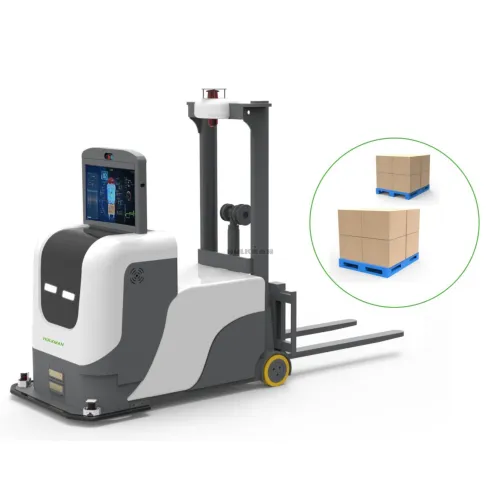What is the difference between a stacker and a forklift?
Forklifts and stackers are common cargo handling vehicles, and have long been indispensable equipment for people's work and labor. For example, cargo handling vehicles have long become the favorite of the majority of people in the industry. The market share of stackers and forklifts has gradually increased, and they are the more popular cargo handling vehicle equipment nowadays. So what is the difference between a stacker and a forklift? Let me introduce it to you below.
Stackers are also called stackers (stackers, lifting vehicles, loading and unloading vehicles, stackers), and belong to the category of warehouse forklifts in the category of forklifts. Stackers are suitable for working in narrow passages and confined spaces, and are ideal equipment for production workshop transportation and high-stack warehouses. Stackers can be divided into: all-electric stackers, semi-electric stackers, manual stackers, etc. The structural type has a gantry more than the electric pallet handling forklift, and the fork lifting height is usually within 4.8 meters. Stackers are widely used in industries such as petroleum, paint, chemical, military, pharmaceutical, coal, textile, pigment, and other places containing explosive mixtures, such as railways, ports, warehouses, and freight yards, for transportation, stacking, and handling operations.

Machinery
Refinery Machines: Key Innovations Reshaping Oil Production
How Commercial Brewing Systems Transform Local Economies?
How to Choose the Best Famous Industrial Screw Press?
How Does an Eco-Friendly Packaging Machine Work?
Unlocking Efficiency: The Perfect XPS Foam Board Machine Guide
How Does Effective Communication Improve Team Collaboration?
Forklifts generally refer to internal combustion forklifts. Electric forklifts are industrial handling vehicles, which refer to various wheeled handling vehicles for loading and unloading, stacking, and short-distance transportation of palletized goods. The diesel engine drives the engine to obtain driving force. Internal combustion forklift technology has been classified as a mature product with strong driving force. It can carry more than 8 tons of goods and is very suitable for high-strength and large-tonnage transportation and shipping of goods in containers, docks, and outdoors. The lifting height of the forklift is usually within 3 meters. Forklifts play a very important role in the logistics system of enterprises and are the main force in material handling equipment. They are widely used in various sectors of the national economy such as stations, ports, airports, factories, and warehouses. Forklifts were developed during World War II. China began to manufacture forklifts in the early 1950s. Especially with the rapid development of China's economy, the material handling of most enterprises has been separated from the original manual handling, and replaced by mechanized handling mainly by forklifts. Therefore, in the past few years, the demand for forklifts in China has grown at a double-digit rate every year.
The final suggestion is: when choosing, you generally need to choose a matching stacker based on the weight of the goods, the height and spacing of the shelves, and the type of pallet. In addition, efficiency and cost are also factors that need to be considered. Generally, electric stackers are more efficient, but they are also more expensive.
The Benefits of Using Quality Comments for Brazed Plate Heat Exchangers
**How Does an Electromagnetic Roasting Machine Work?**
How Does Electromagnetic Roasting Compare to Traditional Methods?
Top Gypsum Powder Grinding Plant Machinery in 2024
Essential Machinery for Gypsum Powder Grinding Plants
The Benefits of Understanding the Difference Between a Steam Boiler and a Hot Water Boiler
How to Choose: What is the Difference Between a Steam Boiler and a Hot Water Boiler?
Next
None
Related Articles
If you are interested in sending in a Guest Blogger Submission,welcome to write for us!









Comments
0